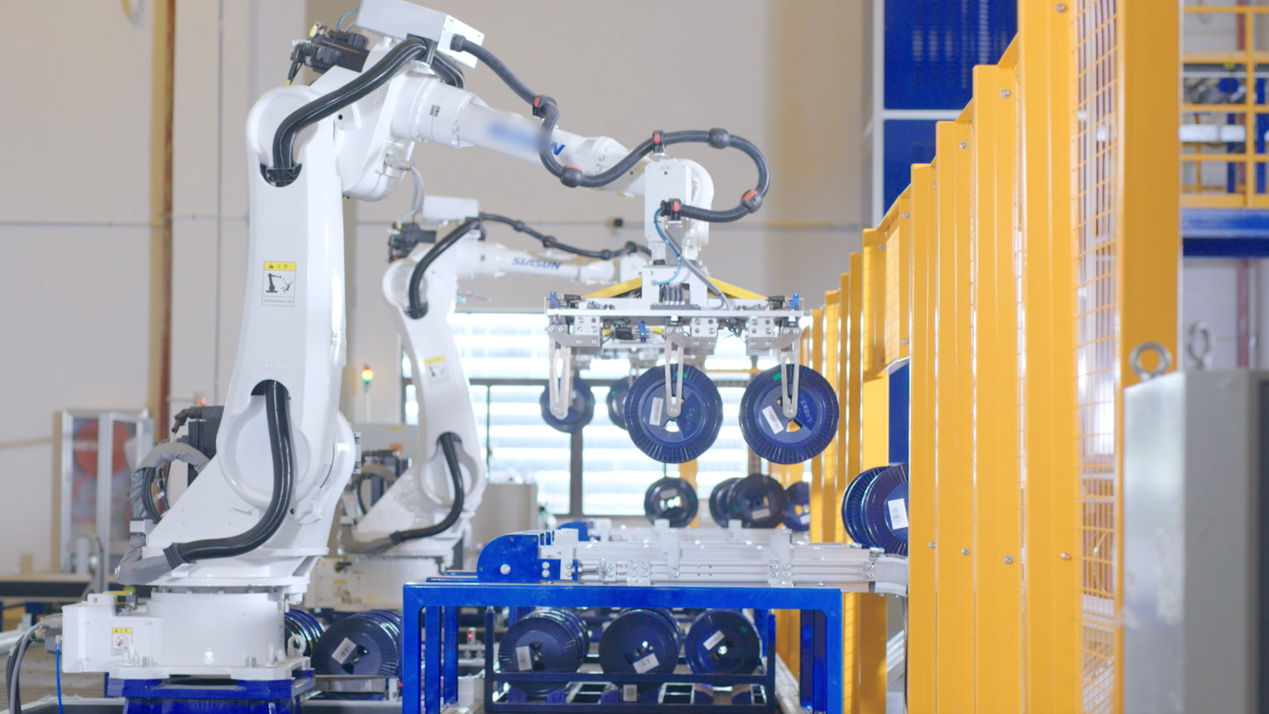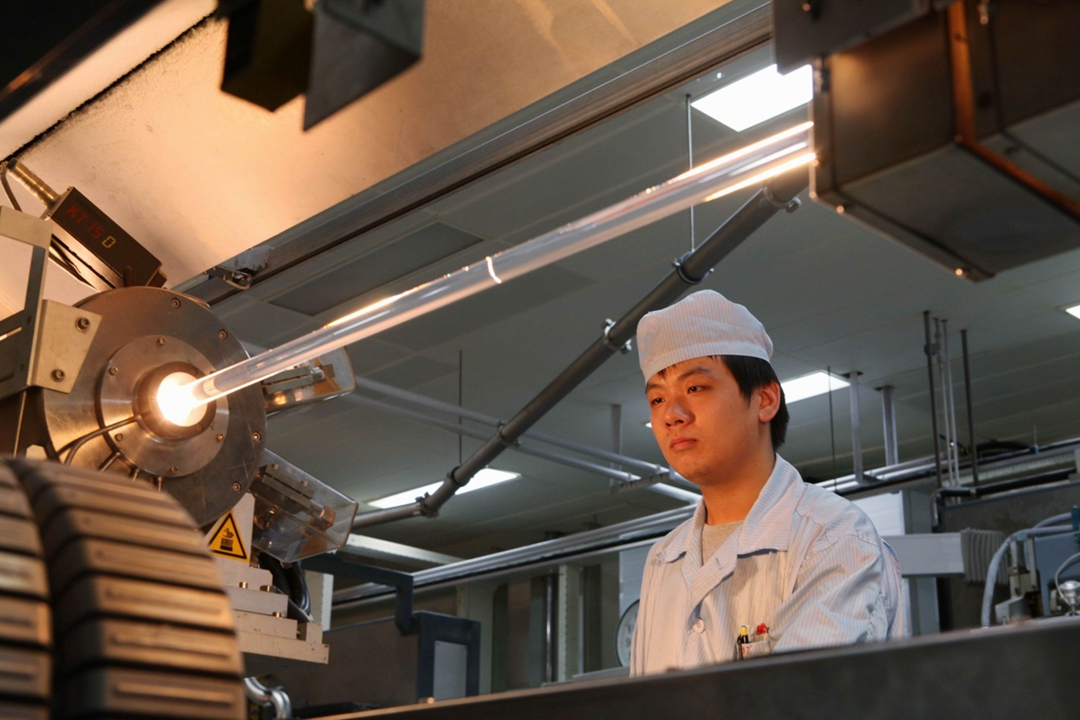03:11

"Optics Valley" might sound like an offshoot of something bigger, like the Silicon Valley. Turning to an integrated high-tech base, the mini-city's development reflected how China upped its status in science.
Central China's Wuhan is the world's largest supplier of optical fiber preform. The Yangtze Optical Fibre and Cable (YOFC) has the world's fastest fiber drawing technique: 3,500 meters per minute, thanks to its self-developed intelligent manufacturing program.
Global demand for optical fibers and cables is increasing as cloud computing and big data applications continue emerging in the 5G era.
"(In the era of) 4G and 3G, China was always following the U.S. and other countries with advanced technologies. And now from 5G on, we start to be the leader, not only in standards but also everyday applications," said Zhuang Dan, YOFC's executive director.

The Yangtze Optical Fibre and Cable (YOFC) based in central China's Wuhan has the world's fastest fiber drawing technique. / VCG Photo
The Yangtze Optical Fibre and Cable (YOFC) based in central China's Wuhan has the world's fastest fiber drawing technique. / VCG Photo
The strategy of being a global industry leader is to serve as a solution provider, Zhuang said. Optics Valley provided an atmosphere of creation.
"This is the valley of innovation. The main reason for our success is innovation. Optics Valley can guarantee you enough support," Zhuang said.
High-quality talent resources and favorable government investment policies are the major resources of the valley.
To attract the elites, a batch of urban function projects covering hospitals, exhibition halls and stadiums was formed in Wuhan.

Urban function projects covering hospitals, exhibition halls and stadiums formed at Optics Valley in Wuhan, central China's Hubei Province. / CGTN Photo
Urban function projects covering hospitals, exhibition halls and stadiums formed at Optics Valley in Wuhan, central China's Hubei Province. / CGTN Photo
Besides optical fiber communication, Optics Valley also stands at the forefront of other industries, such as bio-medicine, eco-friendly energy, and high-end equipment manufacturing.
Established in 1988, Optics Valley is home to 42 universities, 56 national and provincial research institutions and 65 academicians. The 518-square-kilometer development zone now boasts a population of 1.79 million, with 70 percent of residents under the age of 35.
Like many other innovation bases around the world, industry-academy cooperation is Optics Valley's innovation backbone. The city of Wuhan has a total of 83 universities, ranking second in the nation behind Beijing in higher education institutions.
Innovation is in China's genes when it comes to scientific development. The nation's first atomic bomb was developed in the 1960s. Back then, high-end technology was just applied to some key projects, such as national defense systems.

Mushroom cloud from China's first test of an atomic bomb on October 16, 1964. / VCG Photo
Mushroom cloud from China's first test of an atomic bomb on October 16, 1964. / VCG Photo
China's reform and opening-up called for the universalization of science in all fields, with then-Vice Premier Deng Xiaoping stressing that science and technology are productive forces.
Deng called for the modernization of science and technology.
"When the nation just started reforming and opening up, only a small group of people saw the importance of science. But now, we not only focus on the scale of scientific production but also focus on its core competitiveness. China is keeping its technical advantage globally with an innovative approach," said Ye Xueping, Director of Institute of Economics at Hubei Academy of Social Sciences.
China has set its standards as high as outer space and as low as the bottom of the oceans. Whether it's searching for the answer to the universe's origin or hunting for the smallest particle, Chinese scientists are reaching far beyond the horizon.
Progress can be seen in various fields, including quantum communication, radio signal detection, neutrino research, and artificial intelligence.
Innovations and creations have reached ordinary lives, respecting market trends.